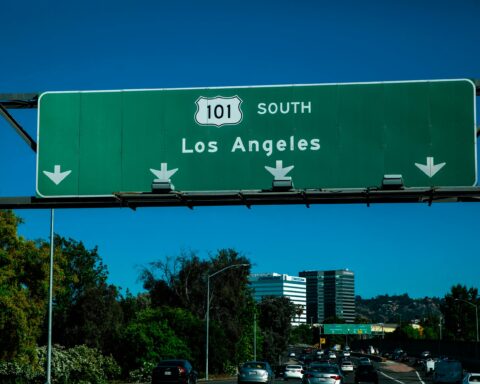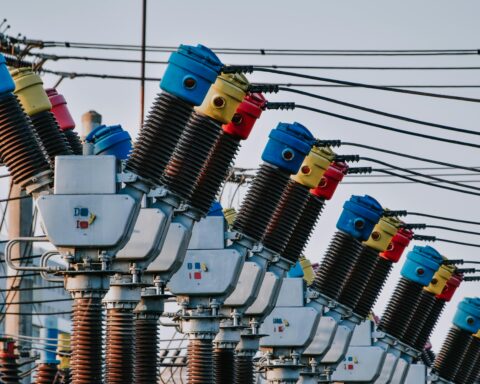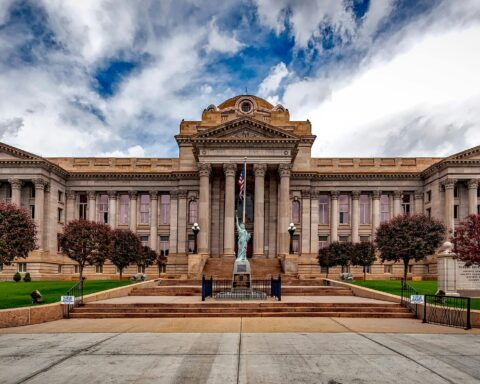The collapse of the Francis Scott Key Bridge in Baltimore last month was a reminder of how vulnerable the nation’s infrastructure and economy overall can be to unforeseen accidents.
“Ports are a major part of the supply chain discussion,” said Bill Hanson, senior vice president for market development at Great Lakes Dredge and Dock Co., which works on infrastructure projects at ports. The importance of ports has “elevated post-COVID, partly as a result of increased trade with China, particularly in the import side, but also has to do with responding to the expansion of the Panama Canal as well as the expansion of the Suez Canal,” Hanson, who is also a member of the American Society of Civil Engineers (ASCE), said in an interview with Government Market News.
As canals expand, more large ships are in circulation across global trade networks, and authorities that run the nation’s ports are looking to expand their capacity to handle the traffic. But operating large ports comes with some unavoidable level of risk.
The Port of Baltimore remains closed as debris is cleared from the site where the Patapsco River flows into the Chesapeake Bay. Following the accident, ports across the nation are assessing what their risks are, and how to best pursue growth while ensuring smooth passage of goods and avoiding accidents.
“It’s a very rare occurrence that this happens. But it’s almost always tragic,” said Hanson. The ASCE has long advocated for more attention and investment to prevent bridges from falling into disrepair. In the aftermath of the accident, Hanson said, “there’s an opportunity for the nation to take a hard look at its bridges.”
Ports expanding, with help from federal funds
Where there are large bridges, a port is often not far up the river. About 100 miles from where the Mississippi River drains to the Gulf of Mexico, the Port of New Orleans is a bustling gateway serving a range of industries. As a self-sustaining political subdivision of the state of Louisiana, Port NOLA generates about $115 million in revenue annually without relying on tax dollars from the state.
“We are one of Louisiana’s largest economic drivers, generating jobs and revenue that gets multiplied again and again across our region and state,” Kimberly Curth, press secretary for the Port of New Orleans, told Government Market News.
One constraint on Port NOLA is the Crescent City Connection Bridge that allows eight lanes of traffic to traverse the Mississippi. The distance between the Crescent City bridge and the water is smaller than bridges near other ports such as the Delaware Memorial Bridge that spans the Delaware River where cargo flows to the Port of Wilmington and the Philadelphia metropolitan area.
In shipping, this distance is referred to as air draft, and at 150 feet, the Crescent City bridge has one of the lowest air drafts for bridges downriver of coastal ports. To compensate, Port NOLA is embarking on construction of a facility 19 miles downriver. The $1.8 billion Louisiana International Terminal will allow the region to handle larger container ships. Rail and truck routes will link the new facility with the wider distribution network.
For regions with taller bridges, the situation in Baltimore is a reminder that the ability to handle the largest container ships presents its own risks. In an effort to protect the Delaware Memorial Bridge, with its 188-foot air draft, construction efforts led by the Delaware River and Bay Authority are already underway on a ship collision protection program consisting of eight structures that will shield the bridge’s tower piers from out-of-control vessels.
The project is estimated to cost $92 million by the time it is completed. That investment will help ensure the bridge is safe as the port itself expands. In 2023, the Port of Wilmington received a $50 million grant from the U.S. Maritime Administration to construct a container yard with 100,000 square feet of warehouse storage, a new inspection platform, truck gate and all-electric operations.
The $50 million flowed to Wilmington through the Port Infrastructure Development Program that received $2.25 billion to invest through 2026 from the bipartisan Infrastructure Investment and Jobs Act passed in 2021. In March, the administration announced that applications are open for $450 million in grants with an application deadline of May 10.
Louisiana is also getting support from federal loans. The Louisiana International Terminal project received more than $226 million from the Infrastructure for Rebuilding America program (INFRA) and about $74 million from the Department of Transportation’s complementary Mega program.
“These historic investments clearly reflect confidence from the highest level of government and global maritime leaders in Port NOLA’s ability to deliver this new terminal,” Curth said. The Louisiana International Terminal is also getting $800 million from public-private partnerships with New Jersey-based Ports America and the Switzerland-based Mediterranean Shipping Co.
The INFRA and Mega programs are part of DOT’s efforts to move people and freight throughout the nation by funding large, complex infrastructure projects. Applications for the next round of $5.1 billion in grant funding are now open until May 6.
“The best way to do infrastructure is robust, consistent funding, so that the engineers can build a workforce,” Hanson said. With sudden increases in funding coming out of the Department of Transportation to support infrastructure projects, Hanson said one challenge is keeping up with the staffing demands to submit applications and get projects ready to break ground. “The bridges, the highways and the ports have all been asking for this money for a very long time.”
If ports are not limited by low air draft under bridges, they still may be limited by the amount of space for ships to navigate.
Outside of New Orleans, other ports in the Gulf of Mexico are enlarging the space of navigable waters. A massive project is underway to expand the Houston Shipping Channel, making it both wider and deeper. Dredging projects that make space for larger container ships are also proposed or in progress at other ports in Texas such as Brownsville, Corpus Christi and Freeport.
On the West Coast, the Port of Oakland also wants to widen its shipping area to give container ships more space to turn around. The plan would allow the port to handle ships up to 13,110 feet long. In its early stages, the plan still needs approval from regulatory agencies in the state of California.
“The shippers will go to the most efficient ports that have capacity. And that’s why you see ports going for deeper water,” Hanson said.














